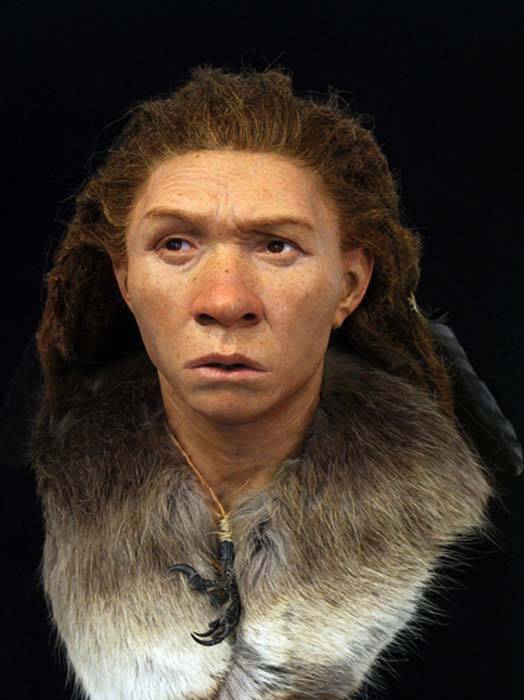“Unlocking the Past: New Discoveries Reveal That Europe’s Ancient Inhabitants Were Surprisingly Dark-Skinned!”
Did you ever think about the skin tones of our prehistoric ancestors? It turns out that the story of human pigmentation in Europe is more colorful than you might expect! A jaw-dropping new study shakes up what we thought we knew, revealing that a whopping 63 percent of ancient Europeans sported dark skin, while just a fraction—only 8 percent—had light skin. That’s right—if you’d traveled back 10,000 years to hang out with Cheddar Man (a real dude, by the way), you’d likely find him with dark skin and blue eyes, not the fair-skinned figure many might assume. This research, which analyzed 348 genetic samples from 34 countries, suggests that the bright complexions we associate with Europe today only really began to flourish around 3,000 years ago! So, what gives? Why the shift? Let’s dive into the findings that might flip your perceptions of European ancestry upside down!
Analysis of 348 genetic samples taken from 34 countries revealed that, across prehistoric and ancient Europe, 63 percent of people had dark skin, 29 percent had “intermediate” skin, and only 8 percent had light skin.

Channel 4/Plimsol ProductionsA recreation of the “Cheddar Man,” a Briton who lived 10,000 years ago and had dark skin and blue eyes.
Light skin is a relatively recent feature of Europeans, according to a groundbreaking new study. While prior research has shown that many prehistoric humans across the continent had darker skin tones, the results of this new study suggest that dark skin may have lasted until much more recently that previously believed — with fair skin only emerging prominently around 3,000 years ago.
Most Europeans Had Dark Complexions Well Into The Iron Age
The scientific consensus has long been that the first humans emerged in Africa and then gradually dispersed from there across the rest of the world. It’s also believed that as these prehistoric humans settled across the northern regions — what we now recognize as the European continent — their complexions eventually lightened.
Scientists have discovered that the genes that result in lighter skin, eyes, and hair emerged among early Europeans starting around 14,000 years ago, during the late stages of the Paleolithic period, or “Old Stone Age.” But a new study, published in bioRxiv, analyzed 348 samples of ancient DNA from archaeological sites across 34 countries in Western Europe and Asia, and found that these genes signifying lighter complexion were relatively sporadic until just 3,000 years ago.

Tom BjörklundIllustration of a dark-skinned Scandinavian girl based on DNA found on her 5,700-year-old piece of chewing gum.
Analysis of samples originating from between the Copper Age (around 5,000 years ago) and the Iron Age (roughly 3,000 years ago) found that only about half of the people in question had light or pale skin tones. And in some regions, darker complexions were more prominent until even more recently.
But how and why exactly did skin tones change in prehistoric and ancient Europe?
Why Ancient Eurasians Eventually Evolved To Have Lighter Skin
Modern humans migrated from Africa to Europe and Asia between 60,000 and 70,000 years ago, and their features gradually changed over time.
One of the biggest reasons humans genetically evolved to have lighter skin was due to the amount of ultraviolet (UV) light exposure they were getting in these new regions. With less UV light exposure in the more northern regions, humans adapted to have paler skin that could better absorb UV light to produce vitamin D.

Royal Pavilion & Museums; Brighton & HoveThe face of a Cro-Magnon man, a group that succeeded the Neanderthals in Europe and lived between 30,000 and 10,000 years ago.
But this happened much later in the historical timeline than previously believed, which suggests that there were additional factors at play, like diet.
The study explored this theory as well. It’s possible, even likely, that before human societies settled down and focused on agriculture, they were eating more foods that were high in vitamin D. As the human diet gradually changed, however, it became more genetically advantageous to synthesize it through the skin. More importantly, this did not happen all at once.
“The shift towards lighter pigmentations turned out to be all but linear in time and place, and slower than expected,” researchers wrote in the new study, “with half of the individuals showing dark or intermediate skin colors well into the Copper and Iron ages.”
The study’s authors also noted a “peak” in incidence of light eye pigmentation in Mesolithic times, with an accelerated change as Neolithic farmers became more prevalent across Western Eurasia.
How Additional Factors Like Sexual Selection And Genetic Drift Also Played A Role In Changing Skin Tones Over Time
These gradual changes help to explain discoveries such as the Cheddar Man, a dark-skinned, blue-eyed man who lived in Britain 10,000 years ago. When he was first found in Gough’s Cave in 1903, researchers assumed he likely had fair hair, light eyes, and paler skin, simply on the basis that he was European. A 2018 DNA analysis, however, found otherwise and concluded that he had dark skin after all.



















